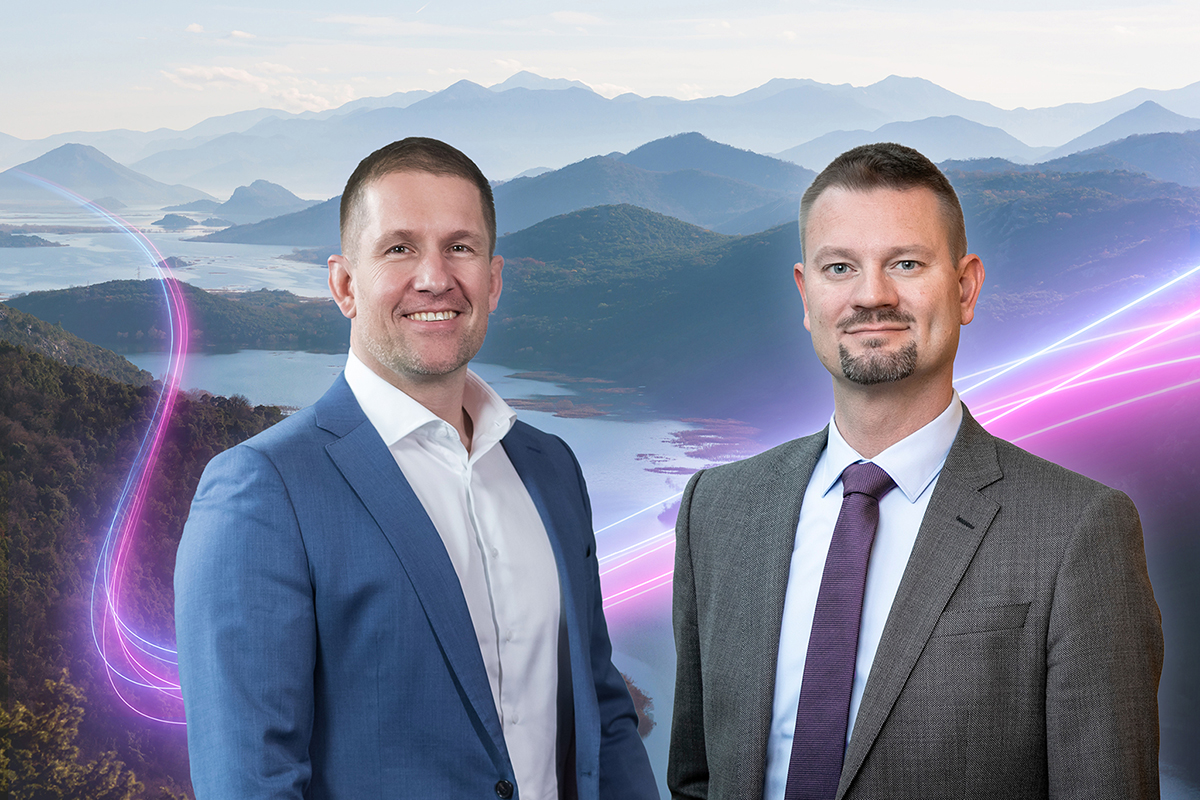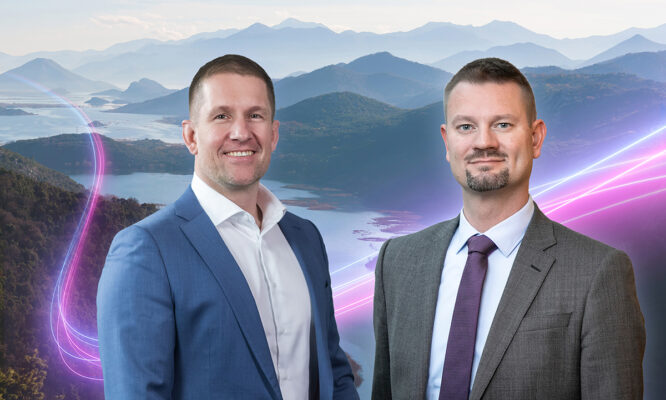Transfer agents face growing complexity and opportunity—as fund distribution evolves. Neil Wise, CCO, Member of the Executive Board, Clearstream Fund Services and Olivier Portenseigne, CEO of FundsDLT, part of CFS explore how the TA can meet modern demands and flourish.
For many years, transfer agents have provided reliable infrastructure for managing investor data, processing transactions and supporting cross-border fund flows. As the market evolves, however, so too do the expectations placed on this key function.
Today’s distribution landscape is more diverse and dynamic than ever. Investors demand faster, more digital engagement while regulation promotes transparency and inclusion. Asset managers seek scale across geographies and products while controlling costs and complexity. New technology — from real-time processing to shared ledgers — is already reshaping expectations and operational possibilities. Built on distributed ledger (DLT) technology — that are reshaping expectations, operational and distribution possibilities.
Far from making the traditional TA model obsolete, these shifts underscore the importance of adapting established strengths to new realities. The challenge is not a failing model; rather, it is a new operational and strategic complexity that fund actors must manage in parallel. For some, the focus is shifting from maintaining infrastructure to enabling efficient and flexible growth across increasingly fragmented but also digital fund distribution channels.
Adapting to complexity
Much of today’s fund servicing infrastructure reflects an earlier era of distribution, when flows were predominantly institutional and operational models could rely on batch-based, file-driven processes. These systems continue to serve many clients effectively, but crucially the environment around them has changed in meaningful ways.
A growing share of distribution is starting to target end-investors more directly, whether through direct-to-consumer channels or digitally enabled B2B2C models. These evolving strategies require improved responsiveness and interoperability across asset managers, platforms, custodians and service providers. Investor engagement is increasingly built around timely, data-rich interactions — creating demand for real-time access, API-driven integration and personalised communications.
In parallel with this digital transformation, the landscape is also being reshaped by the emergence of tokenised fund structures. New models are now live that use shared registers built on distributed ledger infrastructure to streamline fund issuance and servicing. These systems, already functioning in regulated environments, offer enhanced transparency and synchronisation across the fund chain — reducing operational friction and unlocking innovative distribution channels.
At the same time, scalability remains a pressing concern. Asset managers looking to consolidate or expand across markets need transfer agency support that spans multiple jurisdictions and asset classes. A modern infrastructure that can accommodate multi-domicile funds — from UCITS and ETFs to private and alternative vehicles — without requiring separate servicing platforms can deliver meaningful efficiency and control. In this regard, digital-native TA systems are being explored not just for their advanced features but also for their ability to reduce fragmentation and cost.
Repositioning the TA function
The role of the transfer agent is naturally expanding beyond its traditional scope. What was once a back-office utility is becoming an enabler of distribution flexibility, operational control and investor experience.
“Technology is no longer the limiting factor” says Olivier Portenseigne, CEO of FundsDLT. “Real-world deployments of cloud-native, blockchain-based TA platforms are now live. The challenge is about shifting the operating model and mindset to match what the future demands.”
Modern TA platforms are being designed with embedded automation and event-driven workflows that streamline repetitive processes and reduce manual intervention. These advances do not just lower costs; they improve service quality, reduce error rates and free up operational capacity. Meanwhile, scalable architecture and seamless integration with existing fund accounting, custody, PMS and compliance tools ensure that such platforms can operate harmoniously within the broader infrastructure.
These new-generation platforms also support embedded tokenisation capabilities, allowing asset managers to explore new distribution channels — from digital banks and wealth apps to crypto exchanges — without needing to overhaul their existing fund strategies. Adoption will differ by market, but the foundations are being integrated today to support tokenisation when the time is right. This flexibility is increasingly viewed not as a differentiator, but as a necessity.
API connectivity, modular design and better interoperability with global messaging standards like SWIFT, FIX or KAFKA are also helping bridge the gap between traditional operations and the demands of a digital-first market. Importantly, these features are being implemented in ways that respect local regulatory frameworks and the high standards of investor protection that fund actors have worked hard to uphold.
Transformation in motion
These enhancements are not theoretical — they are in production today. Clearstream Fund Services, together with FundsDLT, has supported the deployment of a digital transfer agency platform with Standard Chartered Bank to address exactly these challenges. This solution supports operations across multiple jurisdictions and fund types and has delivered tangible gains.
“Clients are looking to scale across markets and deliver a better investor experience. Clearstream is committed to supporting transfer agents by providing advanced technological solutions that enhance operational efficiency and scalability. A modern TA platform supports that — not just by improving processing, but by providing real-time insights, operational control, and new distribution possibilities, enabling TAs to better serve their clients and adapt to the evolving demands of the fund distribution landscape.” Neil Wise, CCO, Member of the Executive Board, Clearstream Fund Services.
This case illustrates that transformation does not require abandoning existing systems; indeed, the old and the new will need to co-exist for some time. Instead, it involves enhancing the servicing model to reflect the evolving expectations of asset managers, regulators and investors alike. Clients are not being asked to abandon familiar processes, but to supplement them with technology that enables scale, responsiveness and innovation.
“This isn’t about replacing trusted processes overnight,” adds Neil Wise, “It’s about giving clients the flexibility to consolidate operations, enhance transparency, and be ready for new fund structures when the market demands it.”
More broadly, the adoption of shared ledger models and modular TA infrastructure is allowing early adopters to align tokenisation initiatives with established workflows, maintain control over investor servicing and deliver high levels of operational efficiency. These tools are now enabling live fund operations in regions as diverse as Europe, the Middle East and Asia — and across fund structures ranging from retail vehicles to institutional mandates.
Supporting future growth
As the fund distribution landscape becomes more interconnected, data-intensive and investor-facing, transfer agents have an opportunity to support clients in new and valuable ways. The ability to manage complexity while realising efficiency and enabling the rise of new digital distribution is no longer a theoretical ambition, it is a competitive advantage — and one that modern TA solutions deliver.
Digital TA platforms, built for multi-asset, multi-domicile environments, are not only helping to simplify operational models but also laying the groundwork for tokenisation-readiness and real-time investor engagement. Their strength lies in integrating with what exists, while preparing for what’s next.
The TA’s role is shifting. “Processing accuracy remains fundamental — but increasingly, the TA’s value will be measured by how effectively it helps fund providers engage investors, scale globally, and innovate with confidence” says Olivier Portenseigne.
This article first appeared on Funds Europe website on 30.06.2025.



